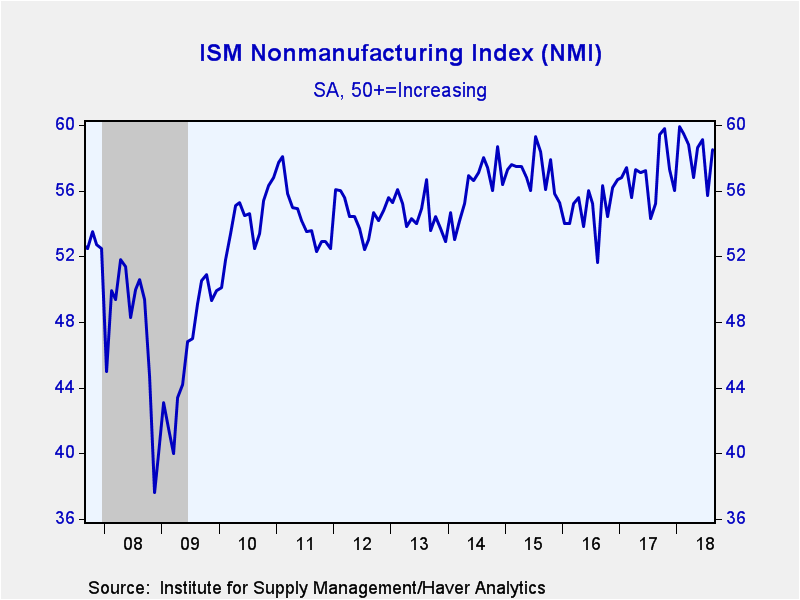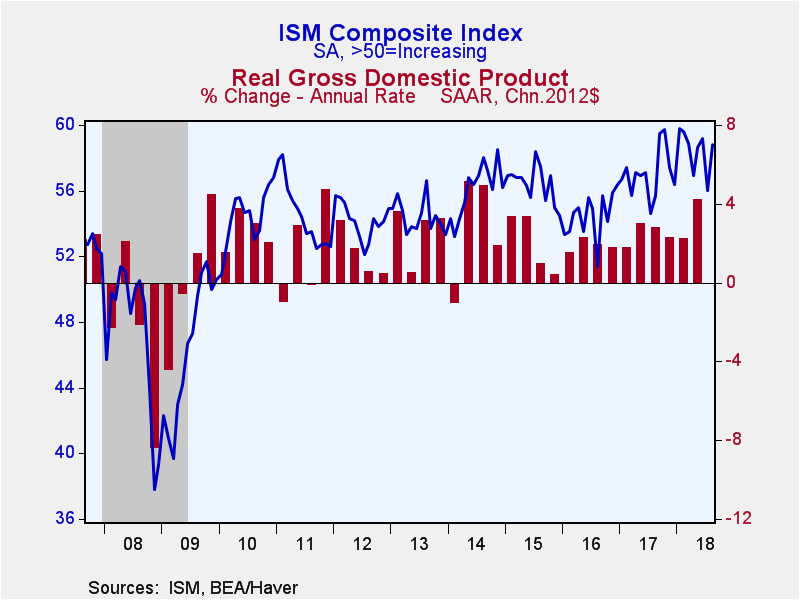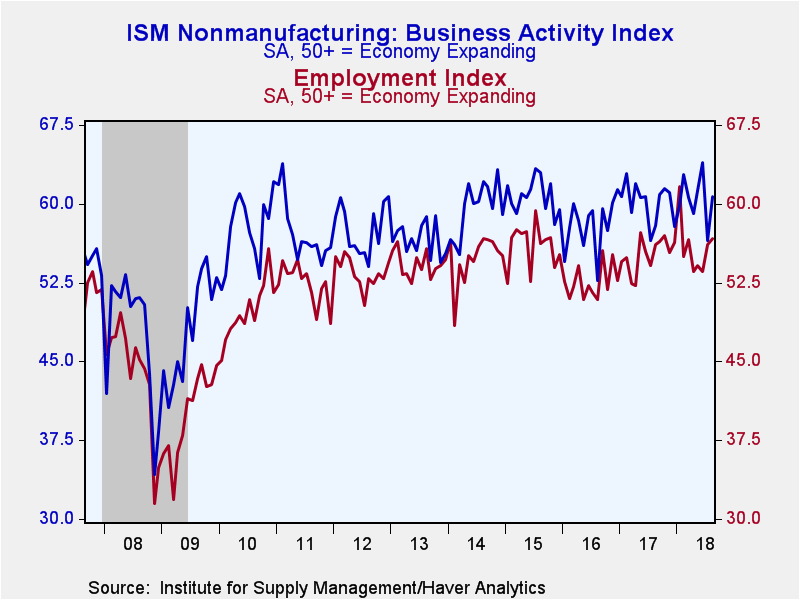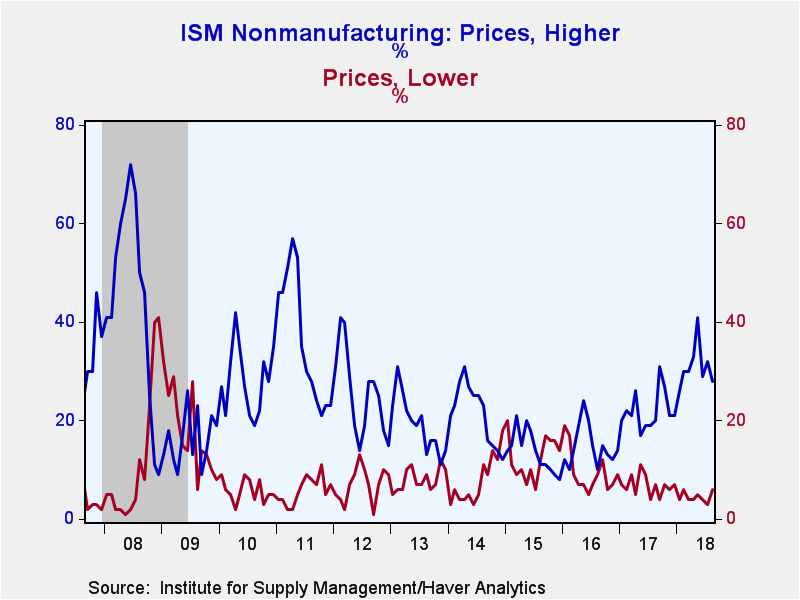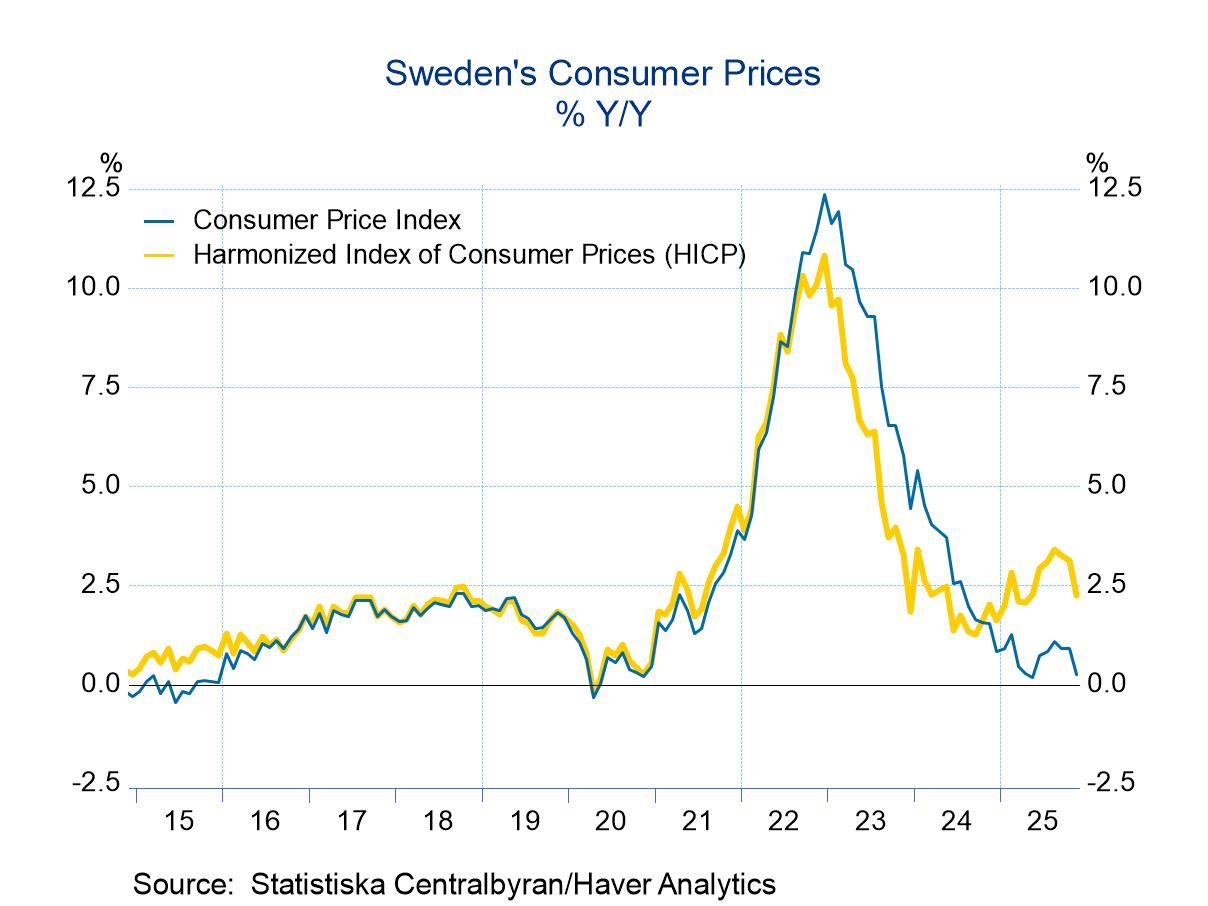 Global| Sep 06 2018
Global| Sep 06 2018U.S. ISM Nonmanufacturing Index Improves
by:Tom Moeller
|in:Economy in Brief
Summary
The Composite Index of Nonmanufacturing Sector Activity from the Institute for Supply Management (ISM) increased to 58.5 during August from 55.7 in July. Despite the increase, the index remained below its February high of 59.5. The [...]
The Composite Index of Nonmanufacturing Sector Activity from the Institute for Supply Management (ISM) increased to 58.5 during August from 55.7 in July. Despite the increase, the index remained below its February high of 59.5. The Action Economics Forecast Survey expected a reading of 56.5. The ISM data are diffusion indexes where readings above 50 indicate expansion.
Haver Analytics constructs a Composite Index using the nonmanufacturing ISM index and the ISM factory sector measure released Tuesday. This composite rose to 58.8 and recouped most of its July decline. During the last ten years, there has been a 71% correlation between this index and the quarter-on-quarter change in real GDP.
Most of the component series in the non-manufacturing survey increased. The business activity reading rose modestly to 60.7, but only recovered some of July's decline. As the new orders reading rose to 60.4, it too remained near July's low. The supplier deliveries index increased to 56.0, indicating a slower pace of order fulfillment.
The employment index inched up to 56.7, its highest level since January. During the last ten years, there has been an 88% correlation between the ISM nonmanufacturing sector jobs index and the monthly change in private service plus construction sector payrolls. Twenty-two percent (NSA) of industries reported a rising jobs level while 11% indicated a decline.
The prices paid index eased to 62.8 from 63.4, and has been fairly stable since late last year. Twenty-eight percent of firms (NSA) increased prices and six percent of firms paid less.
Among the other detail indexes, which are not seasonally adjusted, the export order series strengthened m/m, but has been broadly stable this year. The import index eased, while the order backlog index rebounded following a sharp July decline.
The ISM figures are available in Haver's USECON database, with additional detail in the SURVEYS database. The expectations figure from Action Economics is in the AS1REPNA database.
| ISM Nonmanufacturing Survey (SA) | Aug | Jul | Jun | Aug'17 | 2017 | 2016 | 2015 |
|---|---|---|---|---|---|---|---|
| Composite Diffusion Index | 58.5 | 55.7 | 59.1 | 55.2 | 57.0 | 54.9 | 57.1 |
| Business Activity | 60.7 | 56.5 | 63.9 | 57.9 | 60.1 | 58.0 | 60.8 |
| New Orders | 60.4 | 57.0 | 63.2 | 56.3 | 59.3 | 57.5 | 59.2 |
| Employment | 56.7 | 56.1 | 53.6 | 56.1 | 55.2 | 52.6 | 56.0 |
| Supplier Deliveries (NSA) | 56.0 | 53.0 | 55.5 | 50.5 | 53.2 | 51.5 | 52.5 |
| Prices Index | 62.8 | 63.4 | 60.7 | 58.1 | 57.7 | 52.6 | 50.6 |
Tom Moeller
AuthorMore in Author Profile »Prior to joining Haver Analytics in 2000, Mr. Moeller worked as the Economist at Chancellor Capital Management from 1985 to 1999. There, he developed comprehensive economic forecasts and interpreted economic data for equity and fixed income portfolio managers. Also at Chancellor, Mr. Moeller worked as an equity analyst and was responsible for researching and rating companies in the economically sensitive automobile and housing industries for investment in Chancellor’s equity portfolio. Prior to joining Chancellor, Mr. Moeller was an Economist at Citibank from 1979 to 1984. He also analyzed pricing behavior in the metals industry for the Council on Wage and Price Stability in Washington, D.C. In 1999, Mr. Moeller received the award for most accurate forecast from the Forecasters' Club of New York. From 1990 to 1992 he was President of the New York Association for Business Economists. Mr. Moeller earned an M.B.A. in Finance from Fordham University, where he graduated in 1987. He holds a Bachelor of Arts in Economics from George Washington University.


